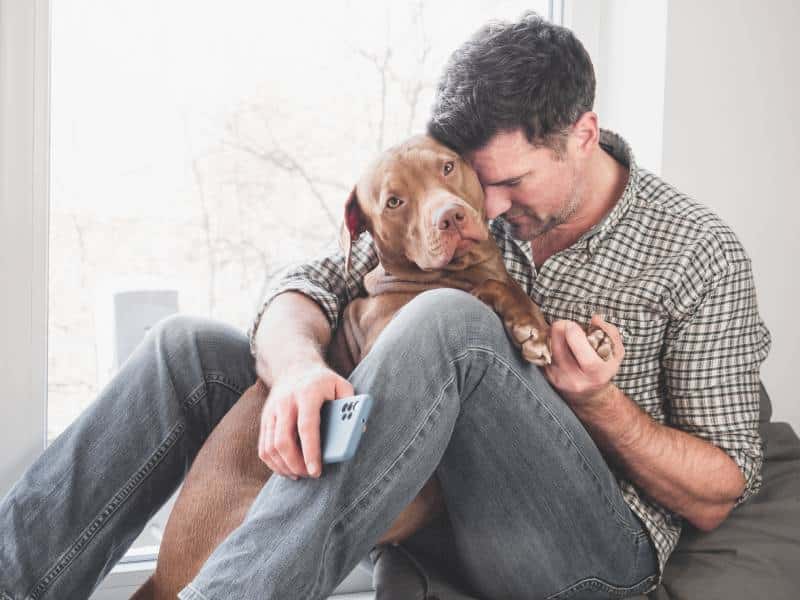In early March, I arrived at the veterinarian’s office hopeful. I departed devastated.
I had received a message from the vet that my 9-year-old, always anxious, feral rescue pooch Harris was calm, doing well, and ready for momma to take home after his anesthesia-requiring dental. In addition to the cleaning, scaling, and polishing, she had mentioned that the two teeth farthest back in his lower right jaw had been “easily extracted.” When I spoke to her in person, she revealed shocking news: The reason the teeth had come out so simply was that their roots had been only loosely attached to Harris’ lower jawbone, or “mandible,” which was eroding and was also surrounded by an ominous “mass.”
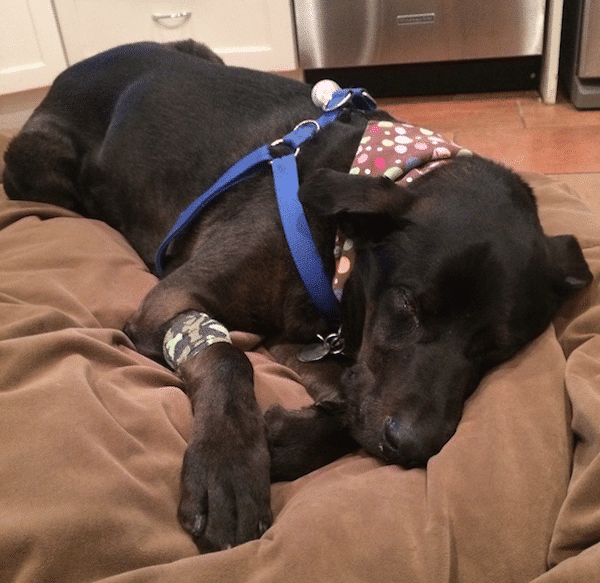
We had been unable to see this invader (but its malodorous nature had prompted the procedure) due to Harris’s life-long, fear-based refusal to open his mouth for inspection or teeth brushing. A biopsy later, the mass had a name: oral fibrosarcoma. This type of cancer manifests as a tumor in the mouth’s fibrous tissue. It can grow aggressively locally, ulcerate, become infected, bleed, and invade your dog’s jawbone.
Our next appointment, with a veterinary oncologist, left us sadly considering two aggressive treatment options. The first was a partial mandibulectomy, in which the “tumor portion” of the lower jawbone itself, with a clear surrounding area, is removed. The second was daily radiation treatment, requiring sedation, for a full month.
We desperately longed for a solution—a way to keep our sweet and loyal Harris with us for as long as possible. But when we repeatedly and with heavy hearts weighed the limited time Harris could “buy” with these tough treatment approaches against the strong chance of the cancer recurring, the amount of his remaining time that would be spent in painful recovery, and the fear our panicky pooch would experience as he went through the multiple appointments and procedures required in either option, we made a gut-wrenching decision. We chose a third option: palliative care.
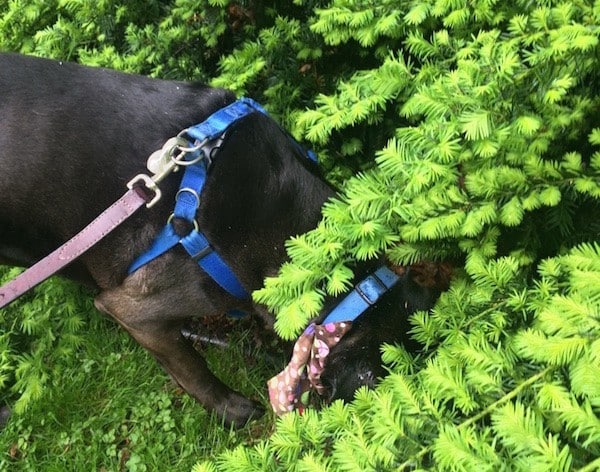
What is palliative care? Well, after your pet is diagnosed with a terminal illness, this means shifting the medical goal for your pooch from cure to comfort. Instead of working to annihilate the illness, you strive to lessen its symptoms and decrease pain. You allow your pet to continue enjoying life while this is still possible. And with your help, perhaps this care can even become palliative “plus,” filled with favorite activities and together time with you. We decided five specific actions could help us and other pet parents deliver the best palliative care and even a plus to ailing pooches:
1. Contact veterinary hospice professionals
Your own vet clinic may provide hospice services; however, if it does not, there are other options. We turned to Lap of Love. We met in our home (thus sparing Harris an anxiety-invoking vet office visit) with a caring hospice-focused veterinarian to create a pharmaceutical, supplement, diet, and symptom-response plan. We reviewed Harris’ diagnosis, food, medications he was already prescribed (antibiotics for ongoing tumor infections and NSAIDs for inflammation and pain), and supplements I had added to his diet (a probiotic and immune system aid).
The vet then recommended the addition of an herb that may reduce bleeding, Yunnan Baiyao, and additional pain medications to include as needed. I learned more about how to identify discomfort levels and actions to take if a “crisis” occurred. With this service, I can email or call with questions or prescription needs and receive a response quickly. And when the day comes to help our dear boy begin his final journey, our hospice vet will come to our home to help Harris start it with those he loves and from where he loves to be.
2. Optimize your dog’s diet
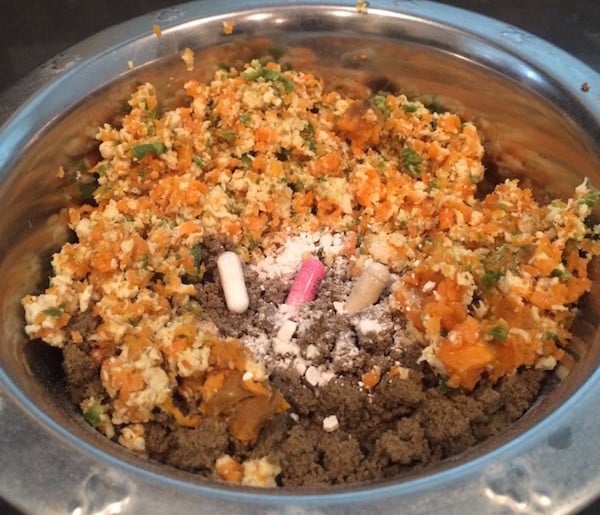
As your pooch deals with his terminal illness, he needs to be able to ingest and digest all the nutrients his food provides. So you may need to make meals more palatable and higher in nutritional content. Since Harris’ tumor bleeds when it gets irritated by dry food, we now soak Harris’s high-protein, grain-free food in water overnight and grind it in the food processor. We add to each meal much more of the chicken, sweet potato, carrot, and green bean blend we had always cooked and included as a topping. Pumps of salmon oil now serve as Harris’s food “dressing.” Add to this his meds and supplements buried in breakfast and dinner, and I believe each bite he takes does its best.
3. Evaluate and increase safety and support in your pet’s environment
As your dog’s needs change with the disease progression, the home environment may also need to change. At this stage for Harris, safety means removing all “chew” toys from his reach because a “chomp” on these results in profuse tumor bleeding. It also includes covering his beds and sleeping areas with towels we can change immediately when bleeding occurs. This helps Harris because he awakens during these episodes, and then stays up and focused on licking and cleaning. A quick towel switch allows him to get right back to rest.
4. Include alternate pain-relief approaches
In addition to medications that lower pain levels, pooches can gain comfort from methods such as massage or even acupuncture. We are learning basic, gentle pet massage techniques and are using these with Harris every evening right before bedtime.
5. Fill days with fun and love!
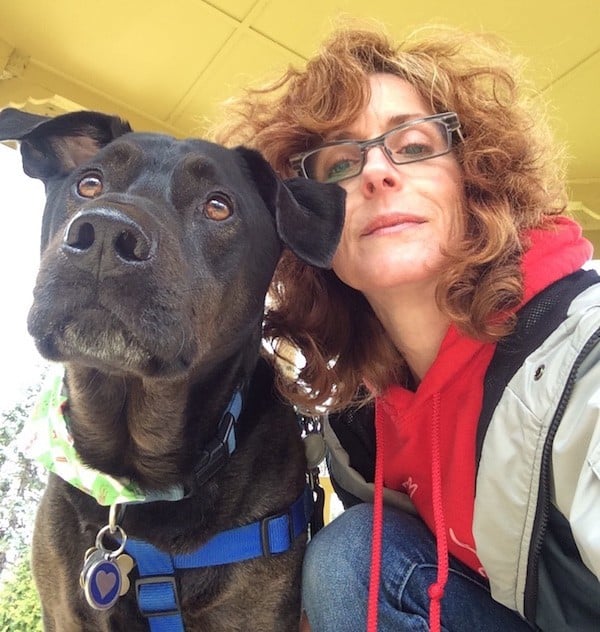
As pets progresses through illness, we should remember that positive emotions, achieved through enjoyable activities and more time with their humans, add to life quality. So engage as often as possible in all the things your pet loves and is still able to do. Harris likes leisurely walks with plenty of time to sniff. He cherishes weekend trips to a nearby park and wild playtimes with our youngest pup, Luna. He goes crazy over grilled salmon. And whipped cream treats from our coffee shop drive him over the edge with glee. So we pack his days with these adventures!
About five months have passed since Harris’ oral fibrosarcoma diagnosis, and the growing tumor continues to become infected. It bleeds daily, at least at a mild level. He is showing more signs of mouth discomfort, so we may increase pain medications soon. But our boy remains active, interested, and excited. He has many wonderful and funny moments, and we value each one, often smiling and laughing through our tears. And we believe more and more that palliative care, despite being so hard to choose, was the most loving option and one we could try our best to turn into palliative plus.
Featured Image Credit: SvetikovaV, Shutterstock

